Mad Hedge Technology Letter
October 7, 2024
Fiat Lux
Featured Trade:
(ROBOTAXI HYPE IS HERE)
(TSLA), (ODFL), (CVLG), (ARCB), (ULH), (SNDR), (WERN)

Mad Hedge Technology Letter
October 7, 2024
Fiat Lux
Featured Trade:
(ROBOTAXI HYPE IS HERE)
(TSLA), (ODFL), (CVLG), (ARCB), (ULH), (SNDR), (WERN)

If trucks drive themselves, what will happen to long-distance drivers?
Self-driving cars and an announcement is here this week.
Musk is set to take center stage in California to host Robotaxi Day. The long-awaited event is meant to offer insight into the electric-vehicle maker's pitch that it is a tech company first and a car company second.
What will become of long-distance drivers?
Actually, self-driving cars should have been part of the street scene for a long time, at least according to X’s CEO Elon Musk's forecasts.
In 2015, the Tesla founder predicted that two years later, fully autonomous cars would be driving around.
Not so fast.
Since then, he has adjusted the forecast year after year. Musk recently said that 2023 will finally be the day, but that came and went.
But it's not just Musk who has butchered it when it comes to self-driving cars. Many car producers have announced autonomous cars every year, and investors are chomping at the bit to find out something meaningful.
Many questions remain unanswered, and I do believe Musk could deliver something underwhelming at robotaxi day. At the end of the day, there is a lot of hype attached to Musk, and every press conference doesn’t deliver.
No wonder because the technical and social challenges involved in getting fully autonomous cars on the road are enormous.
Then there is the legislation of it – can an industry that is tilted towards benefitting Elon Musk really expect any Democratic legislation that is positive?
The consensus is that anything he will try to do will need a Republican president since he has burnt the bridge with the radical left.
What about the technical level?
What happens in unforeseen traffic situations? What if the human has to take the wheel, but his driving skills have long since atrophied? What do autonomous vehicles mean for traffic and urban planning? Who is liable in case of accidents?
Is "platooning" revolutionizing the forwarding business?
In the short term, there are traffic situations that are manageable in their complexity and in which autonomous vehicles could definitely play an important role in the future.
For example, experiments with automated truck convoys have long been carried out on freeways and highways. In this so-called "platooning," several trucks drive behind one another, with only the first vehicle in the column having to be driven by a person.
"Platooning" is intended to save fuel since the vehicles' slipstream can be used more efficiently. But there is also the suspicion that staff could also be saved because fewer long-distance drivers are needed.
In the U.S., the truck driver is the most common occupation in 26 out of 50 US states. There is a 67% chance of it disappearing completely in the next twenty years because artificial intelligent solutions will deliver us a timely way to replace the driver.
The economist John Maynard Keynes predicted in 1930 that by 2030, we would only be working 15 hours a week. In an essay entitled "Economic Possibilities for our Grandchildren, " the Brit didn’t consider that these gains would be pocketed by corporations and not the people.
It’s highly possible that within 10 years, humans won’t be driving groceries or other goods across states, and this function will be replaced by an algorithm. If not that, then products will be platooned to a destination headed by one driver followed by a herd of self-driving trucks behind him or her.
Some of the winners of this A.I. revolution will be public trucking names such as Old Dominion Freight Line (ODFL), Covenant Logistics Group (CVLG), Arcbest (ARCB), Universal Logistics Holdings (ULH), Schneider National (SNDR), Werner Enterprises (WERN).
This week could be a “sell the news” event for Tesla stock.
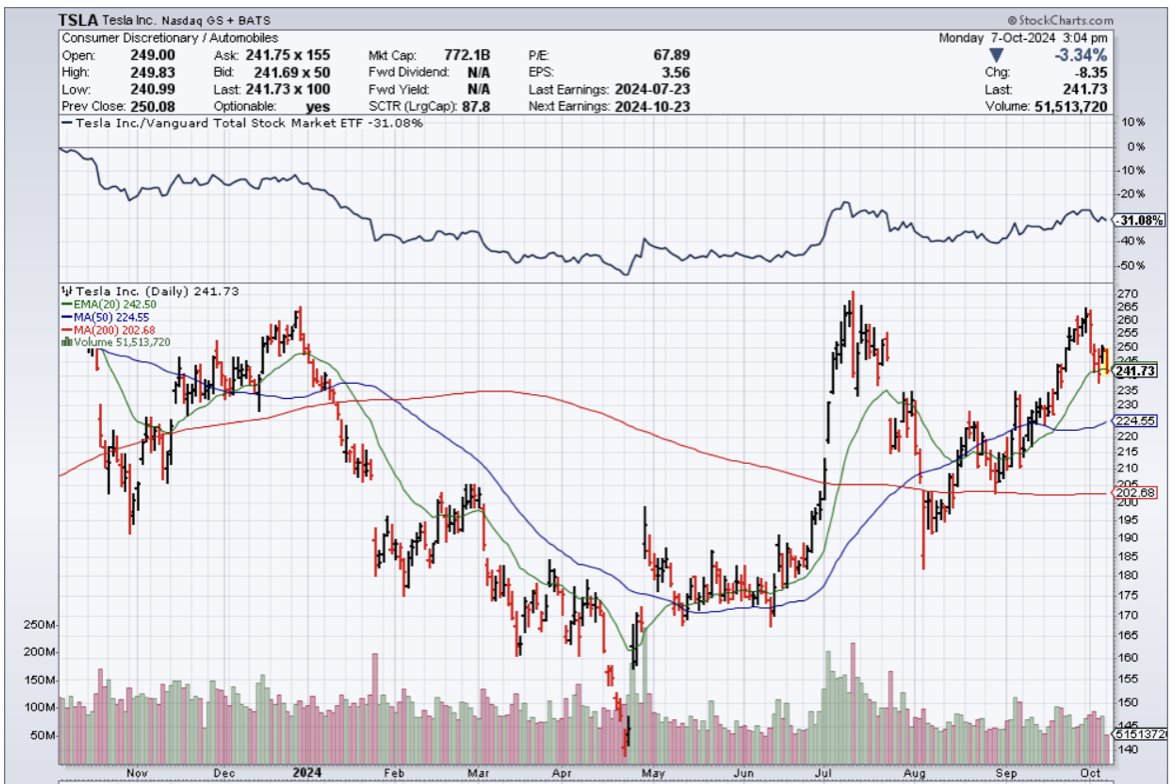
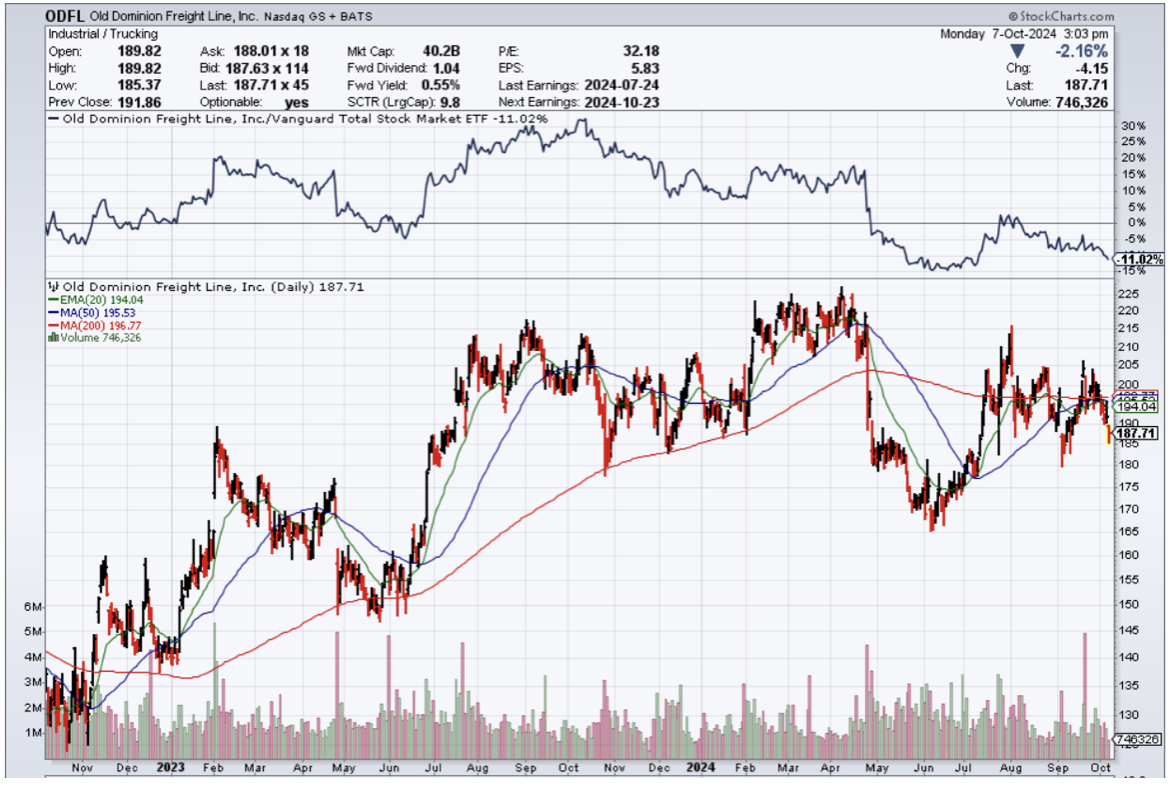
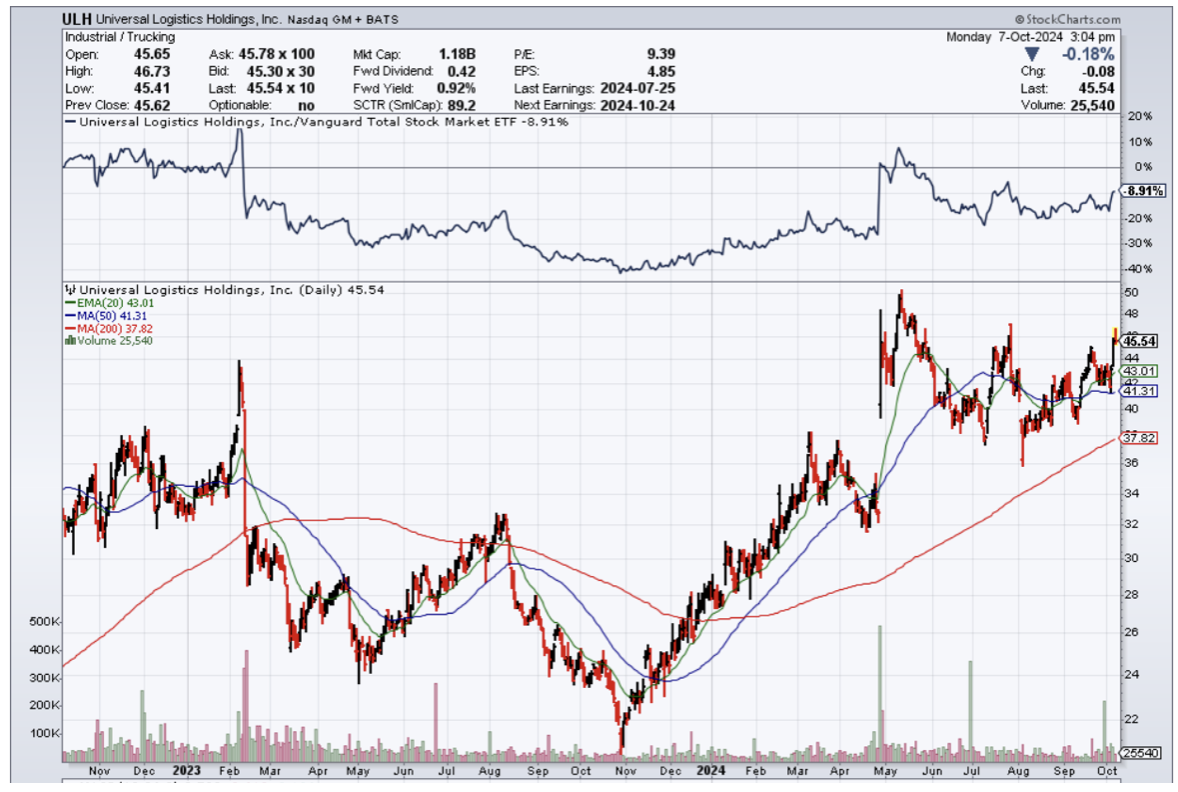
Mad Hedge Technology Letter
February 6, 2023
Fiat Lux
Featured Trade:
(PLATOONING AND TECH IS A MATCH MADE IN HEAVEN)
(ODFL), (CVLG), (ARCB), (ULH), (SNDR), (WERN)

If trucks drive themselves, what will happen to long-distance drivers?
Self-driving cars are still a little ways off - but I do believe it will happen.
What will become of long-distance drivers?
Actually, self-driving cars should have been part of the street scene for a long time, at least according to Twitter CEO Elon Musk's forecasts.
In 2015, the Tesla founder predicted that two years later fully autonomous cars would be driving around.
Not so fast.
Since then, he has adjusted the forecast year after year. Musk recently said that 2023 will finally be the day.
But it's not just Musk who has butchered it when it comes to self-driving cars. Many car producers have announced autonomous cars every year, but they are still a long way off.
Many questions remain unanswered and will still remain unanswered for the foreseeable future.
No wonder, because the technical and social challenges involved in getting fully autonomous cars on the road are enormous.
Then there is the legislation of it – can an industry that is tilted towards benefitting Elon Musk really expect any Democratic legislation that is positive?
The consensus is that anything he will try to do will get delayed and he will need to wait for the Republicans.
What about the technical level?
What happens in unforeseen traffic situations? What if the human has to take the wheel, but his driving skills have long since atrophied? What do autonomous vehicles mean for traffic and urban planning? Who is liable in case of accidents?
Is "platooning" revolutionizing the forwarding business?
In the short term, there are traffic situations that are manageable in their complexity and in which autonomous vehicles could definitely play an important role in the future.
For example, experiments with automated truck convoys have long been carried out on freeways and highways. In this so-called "platooning", several trucks drive behind one another, with only the first vehicle in the column having to be driven by a person.
"Platooning" is intended to save fuel, since the vehicles' slipstream can be used more efficiently. But there is also the suspicion that staff could also be saved because fewer long-distance drivers are needed.
Last but not least, last year’s trucker protests in Canada highlight how governments can quickly turn authoritarian in nature, in this case, by closing truckers’ bank accounts.
Nobody in their right mind can say that’s pro-business and who in their right mind would want to open a new Canadian trucker business after that.
In the U.S., the truck driver is the most common occupation in 26 out of 50 US states. There is a 67% chance of it disappearing completely in the next twenty years because artificial intelligent solutions will deliver us a timely way to replace the driver.
The economist John Maynard Keynes predicted in 1930 that by 2030 we would only be working 15 hours a week. In an essay entitled "Economic Possibilities for our Grandchildren," the Brit didn’t consider that these gains would be pocketed by corporations and not the people.
It’s highly possible that within 10 years, humans won’t be driving groceries or other goods across states and this function will be replaced by an algorithm. If not that, then products will be platooned to a destination headed by one driver followed by a herd of self-driving trucks behind him or her.
Instead of passing on the cost savings to the end consumer, the gains will materialize in increased buybacks, higher dividends, higher stock prices, higher executive compensation, increased operational efficiencies, and decreased wage expenses.
Some of the winners of this A.I. revolution will be public trucking names such as Old Dominion Freight Line (ODFL), Covenant Logistics Group (CVLG), Arcbest (ARCB), Universal Logistics Holdings (ULH), Schneider National (SNDR), Werner Enterprises (WERN).
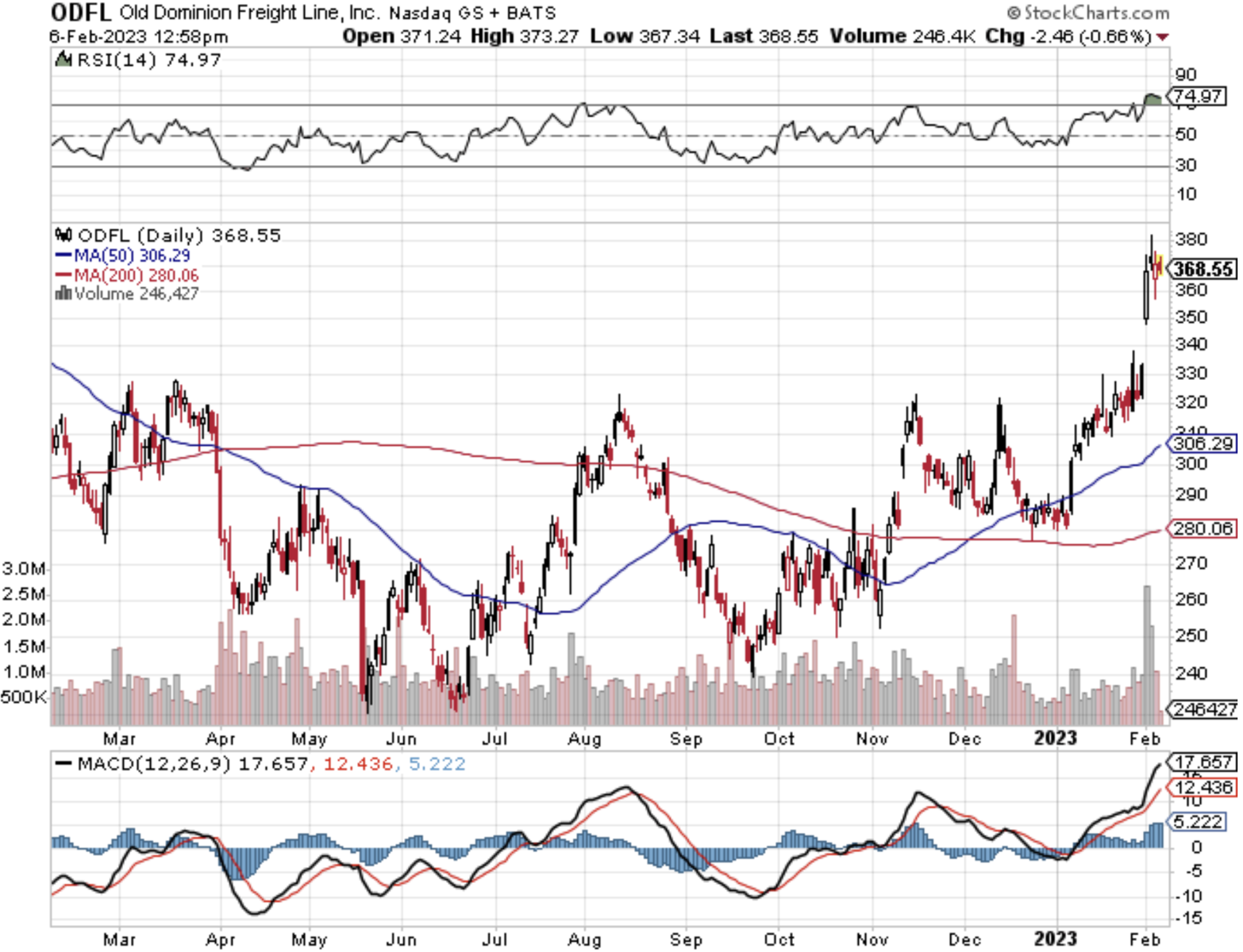
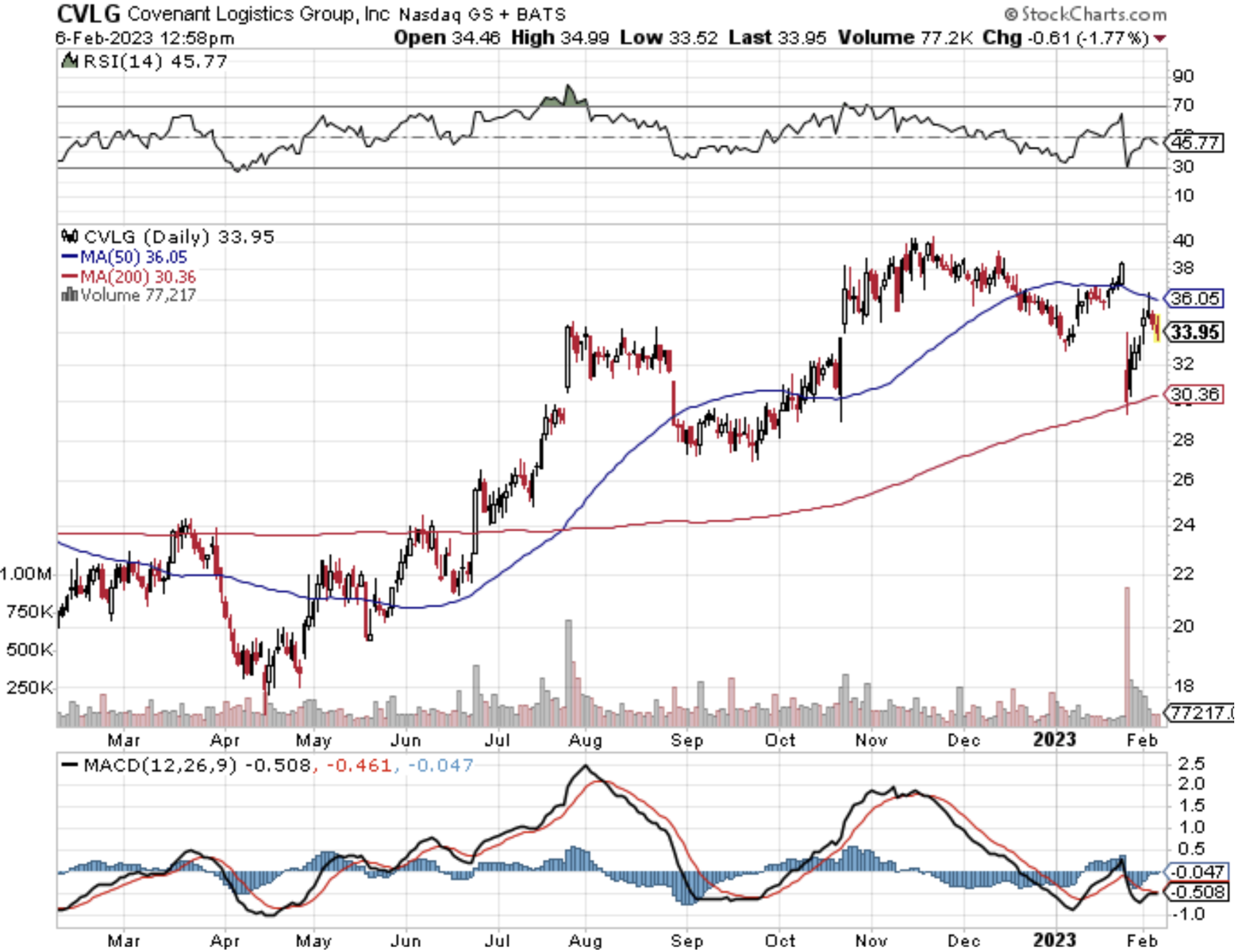
Mad Hedge Technology Letter
March 28, 2022
Fiat Lux
Featured Trade:
(THE TECH PANACEA TO LOGISTICS)
(LSTR), (JBHT), (ODFL), (KNX), (CVLG)

Sure, technology is advancing at a rapid clip, many of us try to harness it for the better as well as make a little coin from it.
A new tailwind is arriving just at a time when investors have been sick and tired of the barrage of inflation news.
Honestly, I am sick of it too.
Even if oil somehow goes to $300 per barrel, which it won’t, but just visualize that it does: automation will bail out the logistic industry.
This is what we have been waiting for, and it’s coming down the pipeline whether we are ready for it or not.
Self-driving technology is almost a generation old and yes, there have been massive improvements and the part of the world this will first filter down to isn’t individuals, but commerce.
Logistic companies are chomping at the bit to integrate this technology into long-haul transport routes.
We are just about there, as the dearth of truck drivers in the United States has slowed to a crawl.
Apparently, most don’t like to sit and drive all day!
It’s also not a secret that many of the employed truck drivers are not Americans; visa issuance was almost entirely halted for 2 years during the health situation, and these workers must be coaxed into immigrating in order to truck drive from places as far as Uzbekistan and Honduras.
On arrival, salaries are dreamy, with starting pay up to $70,000 per year and closer to $100,000 per year for experienced drivers.
Yet, there is still a massive shortage of drivers, much like construction workers, today.
Well, that’s all about to change because many parts of the United States won’t need that long-haul driver anymore to shuttle around goods.
Automation is transforming the trucking industry as self-driving trucks are already on America's highways, currently in the testing phase, as a new study warns up to a half-million jobs are at risk of being displaced by robots.
The integration of automation in long-haul trucking could replace 97% of human truck drivers, the equivalent of approximately 550,000 jobs.
Researchers developed several automated trucking deployment scenarios, including deployment in southern states, deployment for journeys more than 500 miles, and widespread deployment across the country.
This study was the first to combine a geospatial analysis based on shipment data with explicit consideration of the specific capabilities of automation and how those might evolve over time.
Depending on the scenario, they found the rollout of automation may have up to a 94% impact on long-haul operator hours, equivalent to up to 550,000 jobs that could be displaced.
Researchers received feedback from trucking companies, logistical experts, and tractor-trailer operators to develop a roadmap for the automation rollout within the trucking industry.
At the bare minimum, the highway part of the automation is solved, allowing technology to solve other parts of the logistical conundrum.
Long haul is first and foremost the easiest part of the equation and I am talking about those large stretches of hundreds of miles that require trucks to merely drive in a straight line.
Certainly, the “last mile” challenge is a whole different animal with navigating through narrow city streets that include one-way streets much harder to just program up in software.
Trucks move 70% of U.S. freight in weight, and labor and fuel costs pressure logistics companies' margins, forcing them to raise shipping rates or face margin compression.
The current dilemma of astronomical oil prices is forcing logistic companies to make some real headway into this much-awaited technology.
Putting the kibosh on costs is sometimes impossible to do, but with this shift on the horizon, logistic companies are about to get a lot more profitable very quickly.
Think about it: truck drivers get tired, perform worse than automated technology, and eventually want to unionize.
Getting rid of the human will result in cost savings, and no need to worry about the immigration process that currently has severe backlogs of over one year because of the Covid knock-on effect.
Eventually, Americans will be able to receive their Amazon package for cheaper in the future with the logistic companies able to pass on some of the savings to the end-user.
Win-win situations are hard to come by in this day and age, but this is definitely one of them.
Stocks in this space poised to win from this new technology are Landstar System (LSTR), J.B. Hunt Transport (JBHT), Old Dominion Freight Line (ODFL), Knight-Swift Transportation (KNX), and Covenant Logistics Group (CVLG).
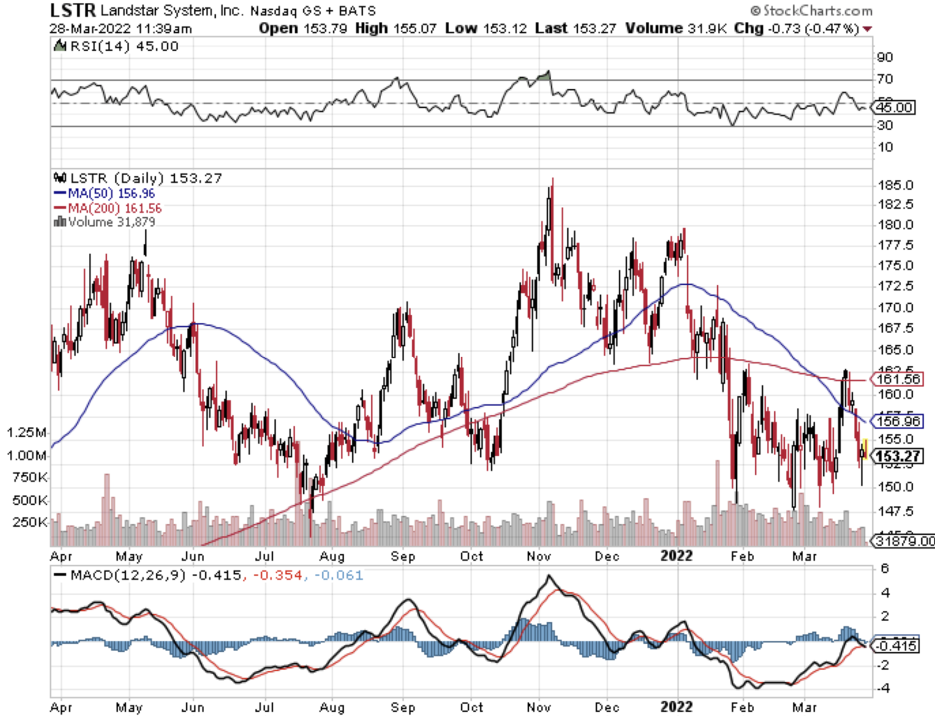
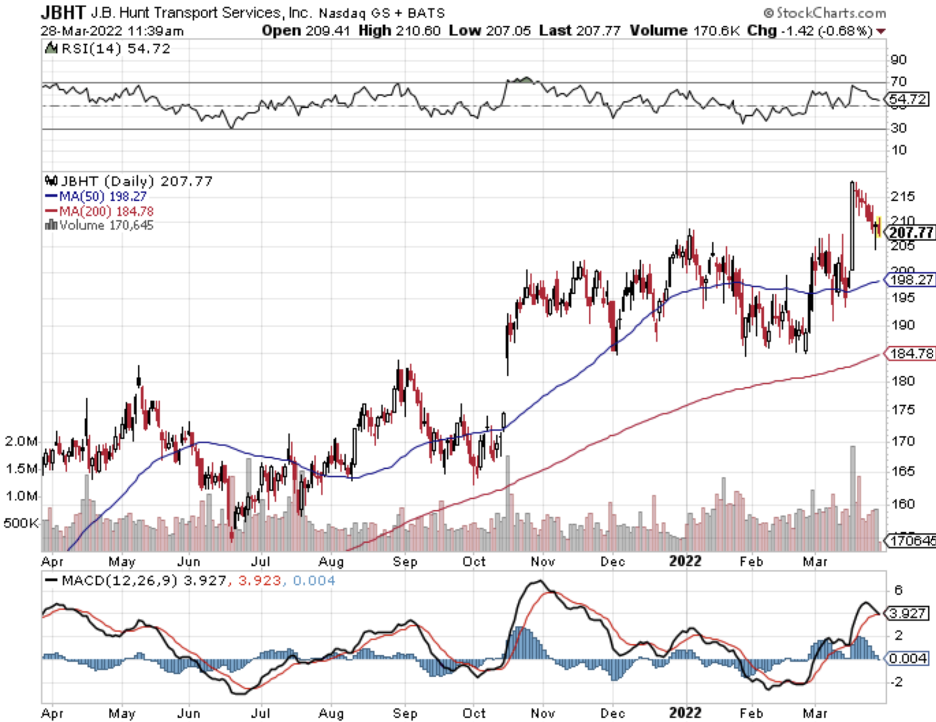
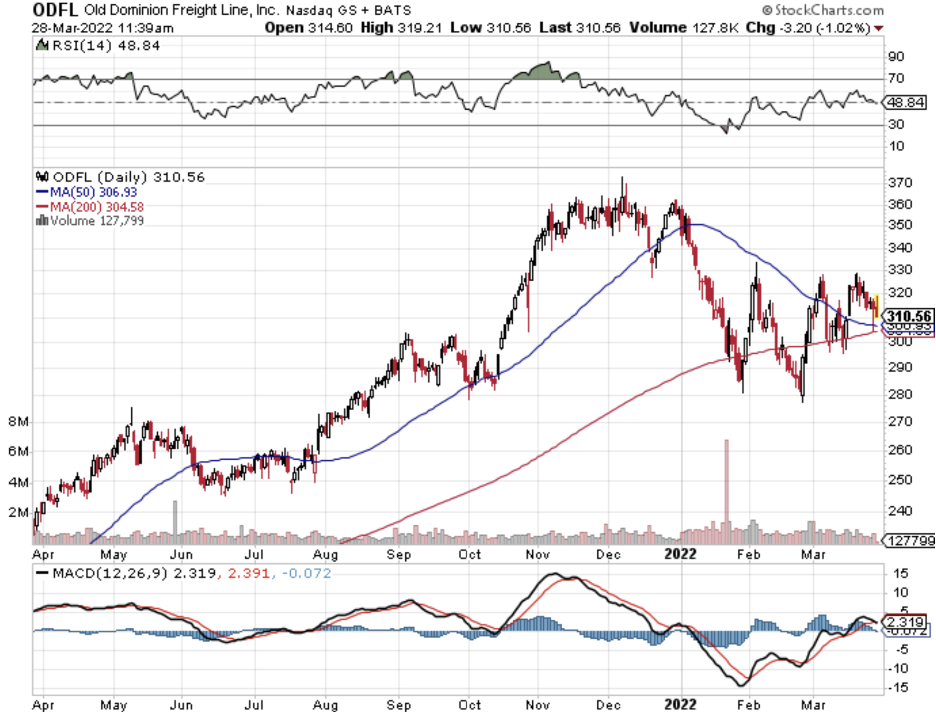
Legal Disclaimer
There is a very high degree of risk involved in trading. Past results are not indicative of future returns. MadHedgeFundTrader.com and all individuals affiliated with this site assume no responsibilities for your trading and investment results. The indicators, strategies, columns, articles and all other features are for educational purposes only and should not be construed as investment advice. Information for futures trading observations are obtained from sources believed to be reliable, but we do not warrant its completeness or accuracy, or warrant any results from the use of the information. Your use of the trading observations is entirely at your own risk and it is your sole responsibility to evaluate the accuracy, completeness and usefulness of the information. You must assess the risk of any trade with your broker and make your own independent decisions regarding any securities mentioned herein. Affiliates of MadHedgeFundTrader.com may have a position or effect transactions in the securities described herein (or options thereon) and/or otherwise employ trading strategies that may be consistent or inconsistent with the provided strategies.
This site uses cookies. By continuing to browse the site, you are agreeing to our use of cookies.
OKLearn moreWe may request cookies to be set on your device. We use cookies to let us know when you visit our websites, how you interact with us, to enrich your user experience, and to customize your relationship with our website.
Click on the different category headings to find out more. You can also change some of your preferences. Note that blocking some types of cookies may impact your experience on our websites and the services we are able to offer.
These cookies are strictly necessary to provide you with services available through our website and to use some of its features.
Because these cookies are strictly necessary to deliver the website, refuseing them will have impact how our site functions. You always can block or delete cookies by changing your browser settings and force blocking all cookies on this website. But this will always prompt you to accept/refuse cookies when revisiting our site.
We fully respect if you want to refuse cookies but to avoid asking you again and again kindly allow us to store a cookie for that. You are free to opt out any time or opt in for other cookies to get a better experience. If you refuse cookies we will remove all set cookies in our domain.
We provide you with a list of stored cookies on your computer in our domain so you can check what we stored. Due to security reasons we are not able to show or modify cookies from other domains. You can check these in your browser security settings.
These cookies collect information that is used either in aggregate form to help us understand how our website is being used or how effective our marketing campaigns are, or to help us customize our website and application for you in order to enhance your experience.
If you do not want that we track your visist to our site you can disable tracking in your browser here:
We also use different external services like Google Webfonts, Google Maps, and external Video providers. Since these providers may collect personal data like your IP address we allow you to block them here. Please be aware that this might heavily reduce the functionality and appearance of our site. Changes will take effect once you reload the page.
Google Webfont Settings:
Google Map Settings:
Vimeo and Youtube video embeds:
